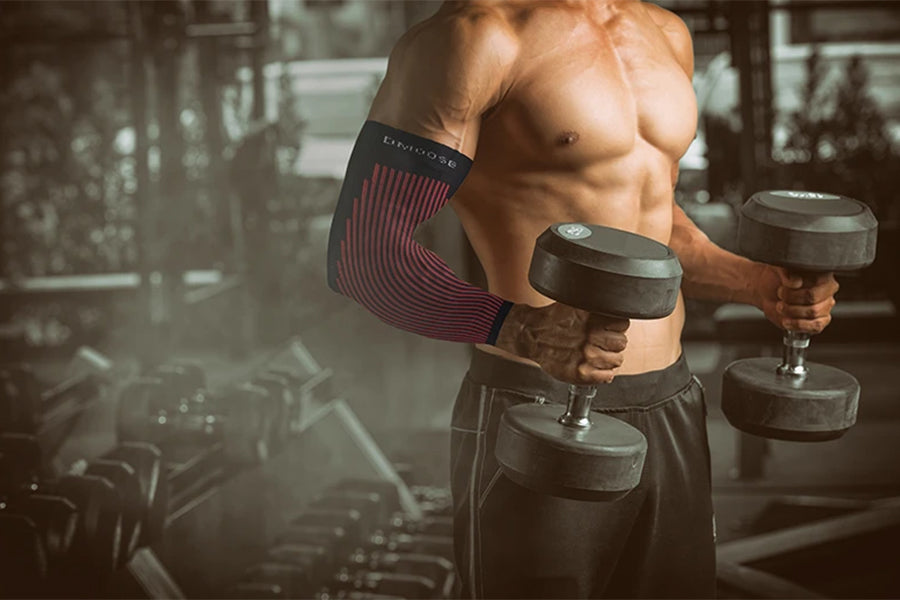
In the pursuit of greater strength and peak performance, athletes and dedicated gym-goers meticulously optimize every variable: nutrition, sleep, programming, and technique. Yet, a piece of apparel often overlooked as mere fashion—the compression top—holds a significant, scientifically proven role in enhancing the lifting experience. Far from being a simple tight shirt, a High Quality Compression Gear for Men – DFND USA top is a piece of engineered performance gear designed to work in synergy with the body, offering benefits that translate directly into better form, reduced fatigue, and ultimately, greater gains in the gym. Understanding the mechanical and physiological advantages of this “second skin” reveals why it has become a staple for serious strength trainers.
The core function of any compression garment is to apply graduated, controlled pressure to the body. For the upper body, this pressure acts upon the chest, shoulders, back, and arms. This external pressure works through two key mechanisms: enhancing blood circulation and providing crucial proprioceptive feedback. It is this dual action—physiological and sensory—that separates a compression top from a regular t-shirt and contributes directly to improved performance in compound movements like the bench press, overhead press, and rows.
Enhanced Circulation and Oxygen Delivery
The most direct physiological benefit of a compression top is its positive effect on blood flow. During intense strength training, muscles demand more oxygen and nutrients while simultaneously producing metabolic byproducts like lactic acid. The efficiency of the circulatory system in meeting this demand and clearing the waste directly influences muscle endurance and time to fatigue.
Compression tops assist this process by gently squeezing the veins and capillaries in the torso and arms. This external pressure acts to narrow the vessels, which in turn helps speed the return of deoxygenated blood and metabolic waste back to the heart. This enhanced venous return is crucial because it makes the heart’s job easier, leading to more efficient oxygenated blood delivery back to the working muscles. By ensuring a steady supply of oxygen and prompt removal of lactic acid, compression tops can delay the onset of muscle fatigue, allowing a lifter to maintain intensity, push through those final, critical repetitions, and ultimately increase the total workload performed during a session—a key driver of muscle hypertrophy and strength gains.
Proprioception and Form Mastery
For strength training, especially with heavy loads, stability and precise movement patterns are paramount. A slight wobble or lapse in form can not only diminish the effectiveness of the lift but also dramatically increase the risk of injury. This is where the compression top’s role as a sensory tool becomes invaluable.
Proprioception is the body’s unconscious sense of where its parts are located in space. The snug fit of a compression top provides continuous, tactile feedback across the large muscle groups of the chest, back, and shoulders. This constant pressure enhances the communication between the skin’s sensory receptors and the central nervous system. In essence, the garment acts as a reminder to the brain to engage and stabilize the underlying muscles.
During a bench press, the compression across the chest and shoulders encourages better retraction of the scapulae (shoulder blades) and a more stable base. For an overhead press, the top’s pressure provides feedback on maintaining a rigid torso and stable shoulder position. By increasing the body’s awareness of its posture and joint alignment, the compression top helps the lifter maintain superior form throughout the set, especially under heavy fatigue. This improved mechanical efficiency allows the lifter to recruit the target muscles more effectively, translating into greater strength output.
Muscle Oscillation and Reduced Damage
Heavy lifting creates intense vibrations and oscillations within the muscle tissues. Think of the tremor you might feel in your arms after a heavy set of dumbbell presses. This unnecessary muscle vibration is not only distracting but also contributes to muscle fatigue and damage.
Compression tops work to dampen this oscillation. By holding the muscle tissue tightly in place, the garment absorbs some of the shock and movement that occurs during explosive concentric and eccentric contractions. These reductions in muscle wobble means that less energy is wasted on stabilizing and correcting the involuntary movement of the muscle belly. Consequently, more energy is conserved and directed toward the actual force production required for the lift. Minimizing this micro-trauma during the lift may also contribute to less post-workout muscle soreness (DOMS), allowing for quicker recovery and a more consistent training schedule.
Conclusion: An Edge in Performance
The compression top is a highly engineered tool that provides a significant edge in strength training. It boosts performance not by creating strength, but by optimizing the body’s existing physiological and neurological functions. By enhancing circulation, providing continuous proprioceptive feedback for better form, and minimizing energy-wasting muscle oscillation, the compression top is more than just a piece of clothing. It is a strategic piece of gear that helps the dedicated lifter break through plateaus, train more safely, and consistently maximize the efficiency and effectiveness of every heavy set. It is a smart investment in sustained strength and superior long-term performance.

More Stories
Fashion Icons You Need to Follow for Inspiration
Merino Wool Tops from Dive Bomb: Breathability Meets Insulation
Fashion Hacks for Looking Chic on a Budget